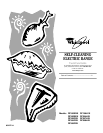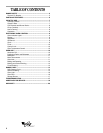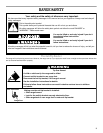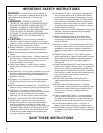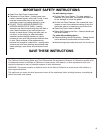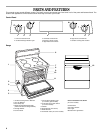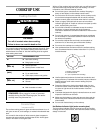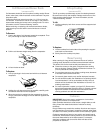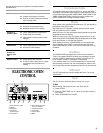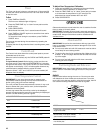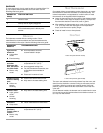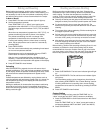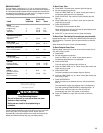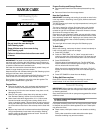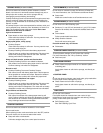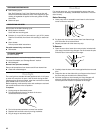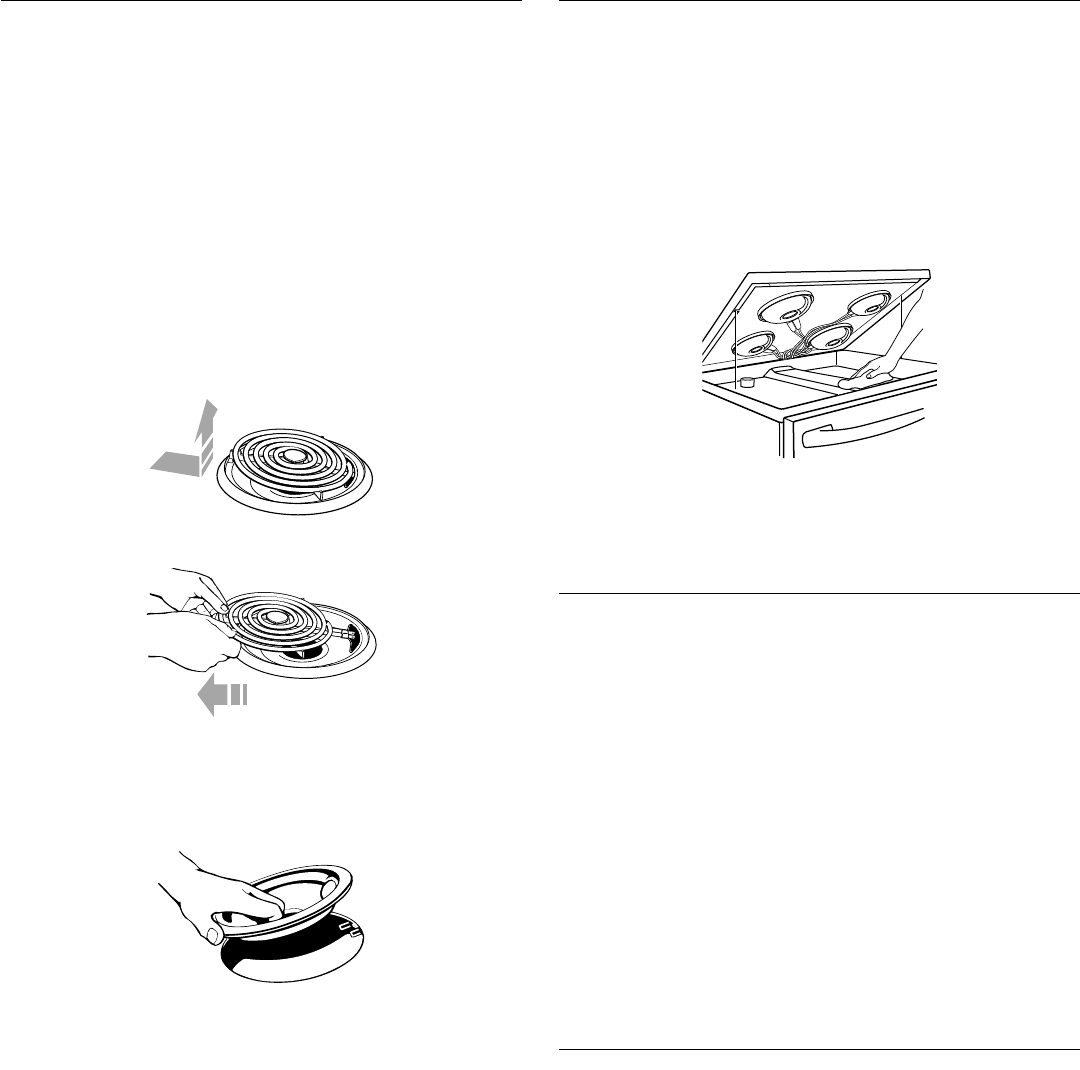
8
Coil Elements and Burner Bowls
(on some models)
Coil elements should be level for optimal cooking results. Burner
bowls, when clean, reflect heat back to the cookware. They also
help catch spills.
Cookware should not extend more than 1 in. (2.5 cm) over the
coil element. If cookware is uneven or too large, it can produce
excess heat causing the burner bowl to change color. For more
information, see the “General Cleaning” section.
Before removing or replacing coil elements and burner bowls,
make sure they are cool and the control knobs are in the off
position.
To Remove:
1. Push in the edge of coil element toward the receptacle. Then
lift it just enough to clear the burner bowl.
2. Pull the coil element straight away from the receptacle.
3. Lift out the burner bowl.
To Replace:
1. Line up openings in the burner bowl with the coil element
receptacle.
2. Holding the coil element as level as possible, carefully push
coil element terminal into the receptacle.
3. When the terminal is pushed into the receptacle as far as it
will go, push down the edge of the coil element opposite the
receptacle.
Lift-up Cooktop
(on some models)
The lift-up cooktop provides easy access for cleaning beneath.
Be careful not to drop the cooktop. Damage could occur to the
finish and the cooktop frame. For more information, see the
“General Cleaning” section.
To Lift:
1. Lift the cooktop by both front corners until the supports lock
into place.
To Replace:
1. Lift the cooktop from both sides while pressing the support
rods back to unlock them.
2. Slowly lower the cooktop into place.
Home Canning
When canning for long periods, alternate the use of surface
cooking areas, elements or surface burners between batches.
This allows time for the most recently used areas to cool.
■ Center the canner on the grate or largest surface cooking
area or element. Canners should not extend more than 1 in.
(2.5 cm) outside the cooking area.
■ Do not place canner on two surface cooking areas, elements
or surface burners at the same time.
■ On ceramic glass models, only use flat-bottomed canners.
■ On coil element models, the installation of a Canning Unit Kit
is recommended. If a kit is not installed, the life of the coil
element will be shortened. See “Assistance or Service” for
ordering instructions.
■ For more information, contact your local U.S. Government
Agricultural Department Extension Office. In Canada, contact
Agriculture Canada. Companies that manufacture home
canning products can also offer assistance.
Cookware
IMPORTANT: Never leave empty cookware on a hot surface
cooking area, element or surface burner.
Ideal cookware should have a flat bottom, straight sides, a well-
fitting lid and the material should be of medium-to-heavy
thickness.
Rough finishes may scratch the cooktop. Aluminum and copper
may be used as a core or base in cookware. However, when used
as a base it can leave permanent marks on the cooktop or grates.
Cookware material is a factor in how quickly and evenly heat is
transferred, which affects cooking results. A non-stick finish has
the same characteristics as its base material. For example,
aluminum cookware with a non-stick finish will take on the
properties of aluminum.



